
When the water rises and fish move into the bushes, Buggs Island can make bass anglers’ dreams come true.
If there is a bass-fishing nirvana, it’s got to be Buggs Island Lake in April.The 49,500-acre reservoir along the North Carolina-Virginia border that goes by two names — Buggs Island and John H. Kerr Reservoir — has for years been one of North Carolina’s best bass-fishing lakes, and some well-travelled pro bass fishermen believe it’s one of the best two or three lakes in the country that are free from aquatic grasses like hydrilla and milfoil.
And throughout this month, almost all of the lake’s largemouths will be moving into the shallows to spawn, setting up on the root systems of gum trees and around shallow stumps, buck bushes and willow bushes.
“April is so good, you can just stumble around and catch some fish,” said Bud Haynes, a veteran guide from Clarksville, Va.
His sentiments are echoed by Brandon Gray, a native of Colfax, N.C., who moved to Clarksville several years ago and has worked at a tackle shop ever since.
“April is probably one of the most dominant months of the year on Kerr Reservoir,” he said. “The fish should be getting into a spawning mode, and there will be a variety of things going on.”
All of which, apparently, depend on Mother Nature and the U.S. Army Corps of Engineers.
Buggs Island is at its springtime best when rains flood the lake and the Corps holds water in at Kerr Dam to keep from flooding areas downstream. If the water level rises an appreciable amount above the normal pool level of 300.5 feet above sea level, the fishing has a chance to be tremendous.
“This is a working lake,” Gray said. “What I mean by that is, the water level means everything. I’ve seen ’em yank three feet out of it in a week, and that really changes things.
“Getting the water in the bushes is a big thing. As long as there is water in the bushes, the fish are going to be there. And I’ve probably seen only one or two springs when the water didn’t get in th e bushes.”
You could never count them all, but there are probably hundreds of thousands of willow bushes and buck bushes growing along the lake’s 800-plus miles of shoreline, along with a tremendous number of gum trees that are within just feet of the water line at normal-pool levels.
When the water rises and spreads into those bushes and around the trees, the bass make a mad rush in there, using the cover to feed, for protection from predators and to spawn.
“If the water gets to 302, you can catch fish in the bushes,” said Haynes (434-374-0348). “The fishing is really good when the water is between 302 and 305 or 306. If it gets higher than that, you have so much cover to go through to get back to where they’ll be.
“The highest I’ve ever seen it is 319.5. That was in back in the 70s, and that’s what it was the first time I fished a tournament on the lake. It’s gotten to 318.5 one other time; I’ve got a stob in my backyard that marks where the water got to.
“In a spring flood, it can get to between 308 to 312, and that’s a hard spring flood where they’ve got to hold the water back.”
The lake is so large, and the habitat so diverse, that most anglers target different areas at different times, using different tactics. Gray said that he mentally divides the lake in half around Ivy Hill Creek, several miles downstream from Clarksville. Below Ivy Hill, and including huge Nutbush Creek, the shoreline is generally flatter, with a greater concentration of gum trees along the banks. Above Ivy Hill, the banks get a little steeper and the number of gum trees drops, but the number of shoreline bushes more than makes up for that.
Also, Gray believes that the water in the upper end of the lake warms up a little earlier, so bass will become active in those areas first. In fact, he said, “The upper end is usually two or three weeks ahead of the lower end,” so he can move from area to area, trying to key on places where bass are still hungry, feeding heavily before the spawn — instead of when they’re locked down, spawning, often ignoring every lure that’s tossed in their direction.
“I feel like we have three stages of the spawn here,” Gray said. “If we have some good early weather patterns, we’ll have some fish spawn around the third week of March. We’ll have a big spawn that’s a month-long thing in April, and about the third week of May, we’ll have a few stragglers start to spawn in main-lake pockets, especially if the water is still up and the shad are starting to spawn.”
So how do Haynes and Gray fish the expanse of a flooded Buggs Island, which can easily expand its normal acreage by 10 percent if the water level rises a couple of feet?
Both fishermen will be fishing shoreline cover — as long as it’s flooded.
“If the water doesn’t go in the bushes, a Shad Rap or Speed Shad will definitely be good. The bass want to go up in the bushes, but if the water isn’t there, you’ll find them outside, on rocky points and around stumps, and they’ll absolutely hit those baits,” Haynes said. “But if the water is in the bushes, that’s where the fish are going to be.”
Haynes keys on areas where the cover is a little more sparse. He feels like bass can spread out too easily in a big cove or pocket where there are two-dozen gum trees lining the bank and a hundred willow or buck bushes in the water.
“I don’t like a lot of bushes in one area, on one point or in one cove,” he said. “I like the ones that stand out, where there isn’t as much cover. That way, there isn’t so much to fish, and you can isolate them. Those are the easiest fish to find.”
Gray likes to fish bushes and trees that are on or close to the ends of secondary points. There may be more fish in the pockets or coves, but he’ll target the ones closer to deep water.
“Typically, I try to concentrate on the trees and bushes on the tips of the points,” he said. “I feel like the bigger fish will spawn there — the fish that are four pounds or better. A majority of the bass will be in the pockets, but the better fish will be out there on the tips of the points.”
Fishermen can use a variety of lures around the flooded bushes and trees, among them jigs, plastic worms or lizards, floating worms, soft-plastic jerkbaits and even small crankbaits — if they’re careful. Haynes said that fishermen who pay careful attention to the first few bites they get can quickly carve out a pattern: the place, depth and type of lure that bass will key on.
“I don’t care what you’re doing, if you get on a pattern — the place, the color of your lure, whatever — you stick with it,” Haynes said.
“Last April, I was fishing around gum trees. I had fished for a long time and caught only one fish. Then on one cast, I slowed down my spinnerbait — I think I was paying attention to something else — and a fish hammered it. You’d think the bait was going 40 miles and hour and he was going in the other direction. I slowed my retrieve down and caught three more right away. Then, I got out of there, because I had a guide trip the next day. We went back and caught 21.”
Buggs Island doesn’t spit out the huge largemouths that some lakes seem to produce. A 4- or 5-pound fish is a good one, with the average fish going about two pounds. A 5-fish limit of bass averaging three pounds is a good day’s fishing.
“I don’t think the fishing is as good as it was 15 years ago, but there isn’t hardly anyplace you can go anymore where there isn’t a lot of fishing pressure,” Gray said. “There are plenty of 4- or 5-pound fish. I think those fish are still here, but they’re harder to catch.”

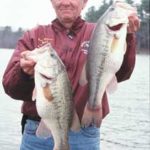
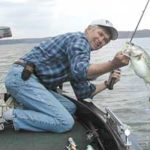
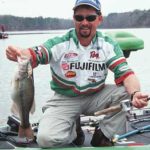
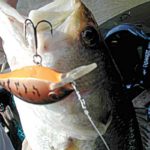
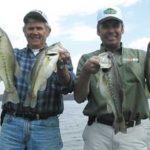
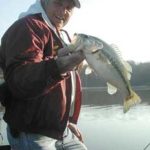
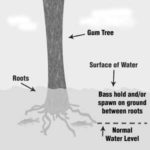
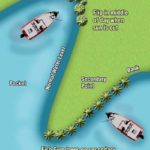
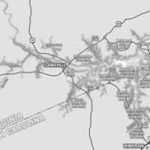



Be the first to comment